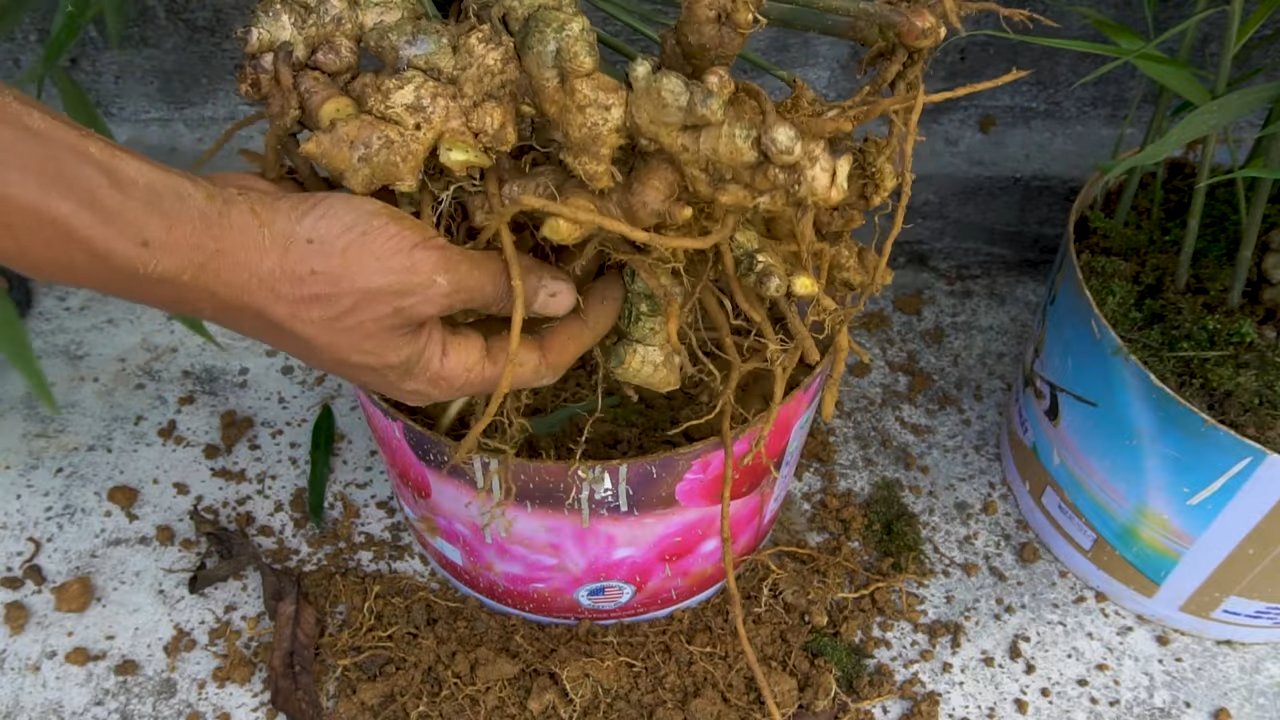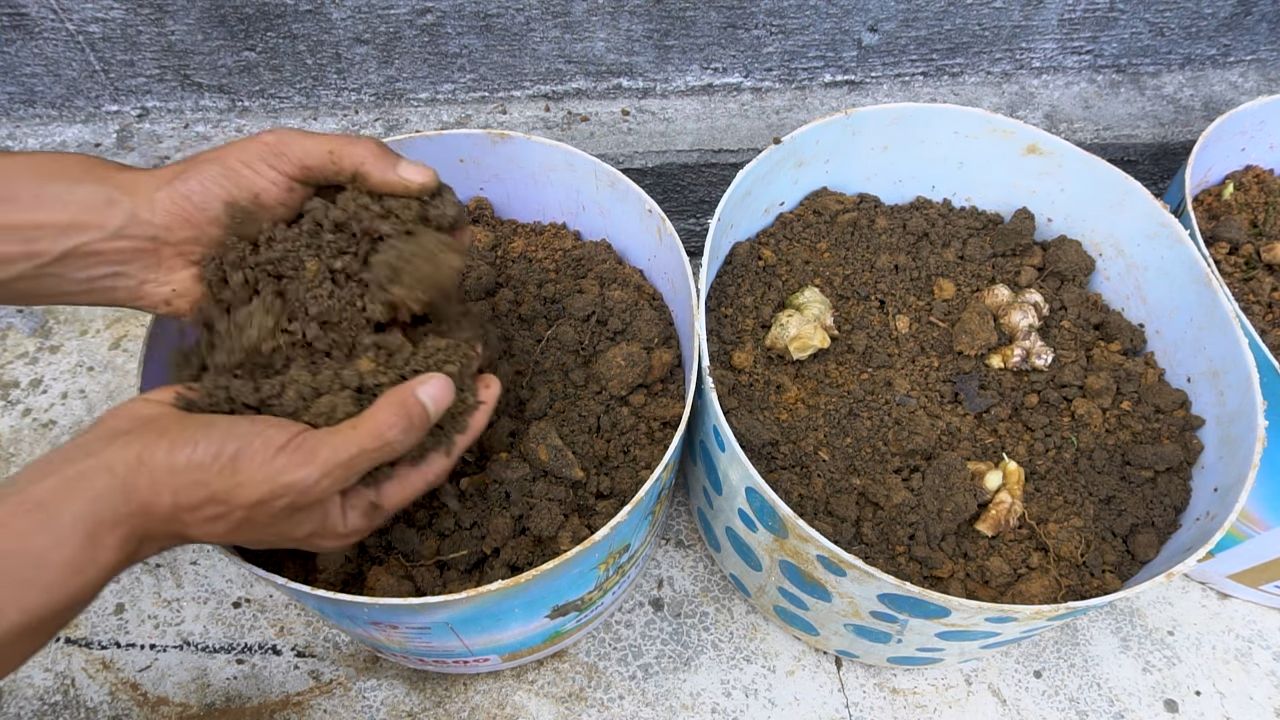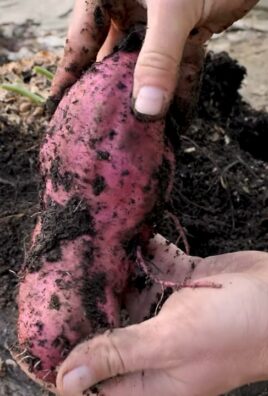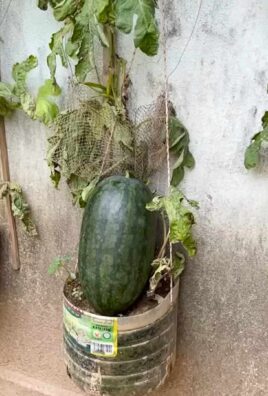Growing Ginger in Containers: Unlock the secrets to cultivating your own spicy treasure, right on your patio! Have you ever dreamed of snipping fresh ginger root straight from your garden for your favorite recipes or soothing teas? Well, dream no more! This DIY guide will walk you through everything you need to know to successfully grow ginger in containers, no matter your experience level.
Ginger, with its pungent aroma and zesty flavor, has a rich history spanning millennia. Originating in South Asia, it has been prized for its medicinal and culinary properties across various cultures. From ancient Ayurvedic practices to traditional Chinese medicine, ginger has been used to treat ailments and enhance flavors for centuries. Even today, it remains a staple ingredient in cuisines worldwide.
Why should you embark on this exciting gardening adventure? Well, for starters, store-bought ginger can sometimes lack the vibrant freshness of homegrown varieties. Plus, growing ginger in containers allows you to control the growing environment, ensuring optimal conditions for a bountiful harvest. Imagine the satisfaction of knowing exactly where your ginger comes from and the joy of sharing your homegrown spice with friends and family. I’m excited to share these tips with you!
This DIY trick is essential because it empowers you to bypass potential pesticide exposure from commercially grown ginger and enjoy a truly organic experience. It’s also a fantastic way to add a touch of green to your living space and connect with nature, even if you have limited outdoor space. So, grab your pots, soil, and ginger rhizomes, and let’s get started on this rewarding journey!

Growing Ginger in Containers: A Spicy DIY Adventure!
Hey there, fellow plant enthusiasts! Ever thought about growing your own ginger? It’s surprisingly easy, even if you don’t have a sprawling garden. I’m going to walk you through how to cultivate this flavorful rhizome right in a container, bringing a touch of the tropics to your home. Get ready to impress your friends with your homegrown ginger!
Choosing Your Ginger Rhizome
Before we dive into the planting process, let’s talk about selecting the right ginger. This is crucial for a successful harvest.
* Look for plump, healthy rhizomes: Head to your local grocery store or nursery and choose ginger rhizomes that are firm, plump, and free from wrinkles or blemishes. Avoid any that look shriveled or moldy.
* Eyes are key: The rhizome should have visible “eyes” or buds, which are small, green points where new shoots will emerge. The more eyes, the better!
* Organic is best: If possible, opt for organic ginger. Non-organic ginger might be treated with growth inhibitors to prevent sprouting during storage.
* Soaking (Optional): Some gardeners recommend soaking the rhizome in water overnight before planting to encourage sprouting. I’ve had success both with and without soaking, so it’s really up to you.
Preparing Your Container and Soil
Now that you’ve got your ginger, let’s get the container and soil ready.
* Container size matters: Ginger needs room to spread, so choose a container that’s at least 12 inches deep and 12 inches wide. A wider container is generally better than a deeper one.
* Drainage is essential: Make sure your container has drainage holes. Ginger doesn’t like sitting in soggy soil.
* Potting mix perfection: Use a well-draining potting mix that’s rich in organic matter. I like to use a mix of equal parts potting soil, compost, and perlite. The perlite helps with drainage and aeration.
* Avoid garden soil: Garden soil can be too heavy and compact for container gardening. It can also harbor pests and diseases.
Planting Your Ginger Rhizome
Alright, time to get our hands dirty!
1. Fill the container: Fill your container with the potting mix, leaving about an inch or two of space at the top.
2. Position the rhizome: Place the ginger rhizome horizontally on top of the soil, with the eyes facing upwards.
3. Cover gently: Cover the rhizome with about 1-2 inches of potting mix. Don’t bury it too deep, as this can hinder sprouting.
4. Water thoroughly: Water the soil thoroughly until water drains out of the drainage holes.
5. Label it: It’s always a good idea to label your container with the date you planted the ginger.
Caring for Your Growing Ginger
Once your ginger is planted, it’s time to provide it with the care it needs to thrive.
* Location, location, location: Ginger loves warmth and humidity. Place your container in a spot that receives bright, indirect sunlight. Avoid direct sunlight, which can scorch the leaves. An east-facing window is ideal.
* Watering wisely: Keep the soil consistently moist, but not soggy. Water when the top inch of soil feels dry to the touch. During the warmer months, you may need to water more frequently.
* Humidity boost: Ginger thrives in humid environments. You can increase humidity by misting the leaves regularly, placing the container on a pebble tray filled with water, or using a humidifier.
* Fertilizing for growth: Feed your ginger plant every 2-3 weeks with a balanced liquid fertilizer diluted to half strength. This will provide the nutrients it needs to grow strong and healthy.
* Watch for pests: Keep an eye out for common pests like aphids and spider mites. If you spot any, treat them with insecticidal soap or neem oil.
* Be patient: Ginger can be a bit slow to sprout, so don’t be discouraged if you don’t see any growth right away. It can take several weeks for the first shoots to emerge.
Harvesting Your Homegrown Ginger
The best part! Harvesting your own ginger is incredibly rewarding.
* When to harvest: You can start harvesting ginger about 8-10 months after planting. The leaves will start to turn yellow and brown when the rhizome is mature.
* Partial harvest: If you only need a small amount of ginger, you can carefully dig around the edges of the container and harvest a piece of the rhizome. Be sure to leave the rest of the plant undisturbed so it can continue to grow.
* Full harvest: If you want to harvest the entire plant, gently tip the container over and remove the rhizome from the soil.
* Cleaning and storing: Wash the harvested ginger rhizome thoroughly and let it dry completely. You can store it in the refrigerator for several weeks or freeze it for longer storage.
Troubleshooting Common Ginger Growing Problems
Even with the best care, you might encounter a few challenges along the way. Here are some common problems and how to address them:
* Yellowing leaves: This can be caused by overwatering, underwatering, or nutrient deficiencies. Check the soil moisture and adjust your watering schedule accordingly. Fertilize regularly with a balanced fertilizer.
* Lack of growth: This can be due to insufficient sunlight, cold temperatures, or poor soil. Make sure your ginger plant is getting enough light and warmth. Use a well-draining potting mix that’s rich in organic matter.
* Root rot: This is caused by overwatering and poor drainage. Make sure your container has drainage holes and avoid letting the soil stay soggy. If you suspect root rot, repot the plant in fresh potting mix.
* Pests: Aphids and spider mites are common pests that can attack ginger plants. Treat them with insecticidal soap or neem oil.
Extra Tips for Ginger Growing Success
Here are a few extra tips to help you grow the best ginger possible:
* Start with a larger rhizome: A larger rhizome will have more energy reserves and will be more likely to sprout and grow vigorously.
* Provide bottom heat: Ginger prefers warm soil. You can provide bottom heat by placing the container on a heat mat or near a radiator.
* Mulch the soil: Mulching the soil with organic matter like straw or wood chips can help retain moisture and suppress weeds.
* Rotate the container: Rotate the container regularly to ensure that all sides of the plant receive equal sunlight.
* Don’t give up: Growing ginger can be a bit challenging, but it’s definitely worth the effort. Don’t be discouraged if you encounter a few setbacks along the way. Just keep learning and experimenting, and you’ll eventually be rewarded with a bountiful harvest of homegrown ginger.
Using Your Homegrown Ginger
Now that you’ve harvested your ginger, it’s time to put it to good use!
* Cooking: Fresh ginger is a versatile ingredient that can be used in a variety of dishes, from stir-fries and curries to soups and teas.
* Baking: Ginger can also be used in baked goods like gingerbread, cookies, and cakes.
* Tea: Ginger tea is a soothing and warming beverage that can help relieve nausea and indigestion.
* Medicinal uses: Ginger has been used for centuries for its medicinal properties. It can help relieve pain, reduce inflammation, and boost the immune system.
Growing ginger in containers is a fun and rewarding project that anyone can do. With a little bit of care and attention, you can enjoy a bountiful harvest of fresh, flavorful ginger right from your own home. Happy growing!

Conclusion
So, there you have it! Growing ginger in containers is not only achievable, but it’s also a deeply rewarding experience that brings a touch of the exotic right to your doorstep. Forget relying solely on store-bought ginger; imagine the satisfaction of harvesting your own fresh, vibrant rhizomes whenever you need them. This DIY project is a must-try for anyone who appreciates fresh ingredients, enjoys a bit of gardening, or simply wants to add a unique element to their home.
Why is this a must-try? Because it empowers you to control the quality and freshness of your ginger. Store-bought ginger can sometimes be old, dry, or even treated with chemicals. When you grow your own, you know exactly what you’re getting: organically grown, intensely flavorful ginger ready to elevate your culinary creations. Plus, the process itself is incredibly therapeutic. Nurturing a plant from a small rhizome to a thriving specimen is a deeply satisfying experience.
Beyond the basic method, there are countless ways to personalize your ginger-growing journey. Experiment with different container sizes and materials. Try using a self-watering container to simplify the watering process. Consider companion planting with other herbs like turmeric or galangal, which share similar growing requirements and can create a beautiful and productive mini-garden. You can also adjust the soil mix to suit your specific climate and growing conditions. For example, if you live in a particularly humid area, you might want to add more perlite to your soil mix to improve drainage.
Another exciting variation is to grow ornamental ginger varieties. These plants are prized for their stunning foliage and exotic flowers, adding a touch of tropical beauty to your home or garden. While ornamental ginger may not produce the same edible rhizomes as culinary ginger, they are still a worthwhile addition to any plant collection.
Don’t be afraid to experiment with different fertilizers. While a balanced organic fertilizer is generally recommended, you can also try using compost tea or fish emulsion to give your ginger plants an extra boost. Just be sure to follow the instructions on the fertilizer label and avoid over-fertilizing, which can damage your plants.
The possibilities are truly endless! The key is to start small, be patient, and learn from your experiences. Each ginger plant you grow will teach you something new about its unique needs and preferences.
We wholeheartedly encourage you to give this DIY ginger-growing trick a try. It’s easier than you might think, and the rewards are well worth the effort. Not only will you have a steady supply of fresh ginger, but you’ll also gain a deeper appreciation for the natural world and the joy of growing your own food.
Once you’ve harvested your first batch of homegrown ginger, we’d love to hear about your experience! Share your photos, tips, and tricks in the comments section below. Let’s create a community of ginger-growing enthusiasts and inspire others to embark on this rewarding journey. What worked for you? What challenges did you face? What delicious recipes did you create with your homegrown ginger? Your insights could be invaluable to other aspiring ginger growers. Let’s unlock the secrets of successful container ginger growing together!
Frequently Asked Questions (FAQ)
Q: What kind of ginger should I use to start growing?
A: You can use ginger from the grocery store, but it’s best to choose organic ginger if possible. Non-organic ginger may have been treated with growth inhibitors to prevent sprouting. Look for rhizomes that are plump, firm, and have visible “eyes” or buds. Avoid ginger that is shriveled, soft, or moldy. Soaking the ginger in water overnight before planting can help to rehydrate it and encourage sprouting.
Q: What is the best type of container for growing ginger?
A: Choose a container that is at least 12 inches deep and wide to allow the ginger rhizomes to spread out. A wider container is generally better than a deeper one, as ginger roots tend to grow horizontally. Make sure the container has drainage holes to prevent waterlogging. Terracotta pots, plastic containers, and even grow bags can all be used successfully.
Q: What kind of soil should I use for growing ginger?
A: Ginger prefers well-draining, fertile soil that is rich in organic matter. A good potting mix for ginger would consist of equal parts of potting soil, compost, and perlite or vermiculite. The compost provides nutrients, while the perlite or vermiculite improves drainage and aeration. Avoid using heavy clay soil, as it can become waterlogged and suffocate the roots.
Q: How much sunlight does ginger need?
A: Ginger thrives in partial shade. It needs bright, indirect sunlight, but avoid exposing it to direct sunlight, especially during the hottest part of the day. Direct sunlight can scorch the leaves and damage the rhizomes. A location that receives morning sun and afternoon shade is ideal. If you’re growing ginger indoors, place it near a bright window, but shield it from direct sunlight with a sheer curtain.
Q: How often should I water my ginger plant?
A: Keep the soil consistently moist, but not waterlogged. Water thoroughly when the top inch of soil feels dry to the touch. Avoid letting the soil dry out completely, as this can stress the plant. During the warmer months, you may need to water more frequently. Reduce watering during the cooler months when the plant is not actively growing.
Q: How long does it take to harvest ginger?
A: It typically takes 8-10 months to harvest mature ginger. You can start harvesting small pieces of ginger after about 4 months, but the flavor will be milder. To harvest, gently dig around the plant and remove the desired amount of rhizome. Be careful not to damage the remaining roots. You can then replant the remaining rhizome to continue growing.
Q: How do I store harvested ginger?
A: Freshly harvested ginger can be stored in the refrigerator for several weeks. Wrap it in a paper towel and place it in a plastic bag to prevent it from drying out. You can also freeze ginger for longer storage. Peel the ginger and chop it into small pieces or grate it before freezing. Store the ginger in an airtight container or freezer bag.
Q: Can I grow ginger indoors year-round?
A: Yes, you can grow ginger indoors year-round, provided you provide it with the right conditions. Ensure it receives adequate light, humidity, and warmth. You may need to supplement with artificial light during the winter months. Maintain a consistent temperature of around 70-80°F (21-27°C).
Q: What are some common problems when growing ginger?
A: Some common problems when growing ginger include root rot, fungal diseases, and pests such as aphids and spider mites. Root rot is caused by overwatering and poor drainage. Prevent it by using well-draining soil and avoiding overwatering. Fungal diseases can be treated with a fungicide. Pests can be controlled with insecticidal soap or neem oil.
Q: Can I grow ginger from a piece of ginger that has already sprouted?
A: Yes, in fact, that’s ideal! If you have a piece of ginger that has already started to sprout, it’s a great candidate for planting. Just make sure the sprout is healthy and green. Plant the ginger with the sprout facing upwards. This will give it a head start and increase your chances of success.




Leave a Comment